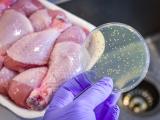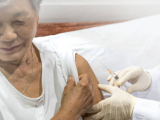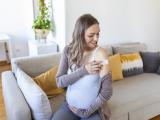Nov 18, 2011
USDA extends comment period for non-O157 E coli testing
The US Department of Agriculture is adding another 30 days to the comment period for its planned ban on non-O157 strains of pathogenic Escherichia coli in beef. The new deadline for comments will be Dec 21, the USDA Food Safety and Inspection Service (FSIS) said in an advance Federal Register notice released today. The agency also said it would hold a public teleconference on the plan on Dec 1 from 1 to 3 p.m. EST, for which preregistration will be required. The American Meat Institute (AMI) and seven other industry organizations had requested an extension of the comment period and a delay in the start of the FSIS's non-O157 meat sampling program, the AMI said in a statement this week. The FSIS notice says the agency still plans to start the program on Mar 5, 2012. Initially the testing will focus on beef trim, which is used in ground beef, and later it will expand to ground beef, the FSIS said when it announced the plan in September. Testing will target six pathogenic E coli strains: O26, O45, O103, O11, O121, and O145.
Nov 18 Federal Register notice
Nov 16 AMI statement
Sep 13 CIDRAP News story about testing plan
Study: Larger clusters, prompt reporting key to solving E coli outbreaks
Clusters of Escherichia coli O157:H7 illness were more likely to be solved if they involved at least three cases and if the first two cases were received on the same day, according to a Minnesota Department of Health (MDH) study published yesterday. The investigators analyzed all E coli O157:H7 clusters involving at least two related cases from 2000 through 2008. Of the 84 clusters identified, 19 (23%) resulted in the identification of a common source of infection and thus a confirmed outbreak. They found that clusters of three, four and five cases were 12.3, 9.8, and 36.7 times more likely to be solved than clusters of two cases were. In addition, the odds of solving a cluster if the first two case isolates were received on the same day were 12.9 times higher than if the first two isolates were received within 8 to 14 days. When the first two case isolates were received within 1 to 7 days, the odds of solving the case were 5.9 times higher than when the first two isolates were received in 8 to 14 days, but the difference was not statistically significant.
Nov 17 Epidemiol Infect absract
Lack of paid sick leave may have raised illness risk in H1N1 pandemic
Not being able to practice social distancing in the workplace raised the risk of having influenza-like illness (ILI) during the 2009 H1N1 influenza pandemic slightly, which may have produced an additional 5 million cases of ILI nationwide, according to a study yesterday by US researchers. They surveyed a nationally representative sample of 2,079 adults by e-mail in January 2010 (of 3,689, for a 56% response rate), with oversamples among Hispanics and African-Americans. They found that two of the leading risk factors for ILI in the respondent or respondent's household were lack of workplace social distances and a higher number of children in the household. The team also found that being Hispanic was related to an elevated risk, even after they controlled for income and education. They found that lack of social distancing at work raised respondents' risk of ILI by 8% and households' risk by 6%. They concluded, "The absence of certain workplace policies, such as paid sick leave, confers a population-attributable risk of 5 million additional cases of ILI in the general population and 1.2 million cases among Hispanics. Federal mandates for sick leave could have significant health impacts by reducing morbidity from ILI, especially in Hispanics."
Nov 17 Am J Public Health abstract
Postvaccination fever rates in Australian kids differed by flu vaccine
Researchers found that almost half of Australian parents reported fever in their preschoolers who received trivalent seasonal flu vaccine produced by CSL Biotherapies, compared with rates of 6% to 7% with two other trivalent vaccines, according to a study in The Pediatric Infectious Disease Journal. The scientists analyzed data from 471 children 6 months to 5 years old, of whom 73 received the CSL vaccine, 99 received a Solvay vaccine, and 64 received Sanofi Pasteur's vaccine—as well as 162 who received CSL's monovalent pandemic H1N1 vaccine. Parents reported fevers in 33 (45.2%) CSL trivalent vaccine recipients, compared with 7 (7.1%) in the Solvay group and 4 (6.3%) in the Sanofi group. Among CSL H1N1 vaccine recipients, 26 (16.0%) had parent-reported fevers. CSL, based in Australia, withdrew its seasonal flu vaccine in June 2010 after hundreds of children under age 5 experienced febrile seizures after they were immunized.
Nov 16 Pediatr Infect Dis J abstract
















